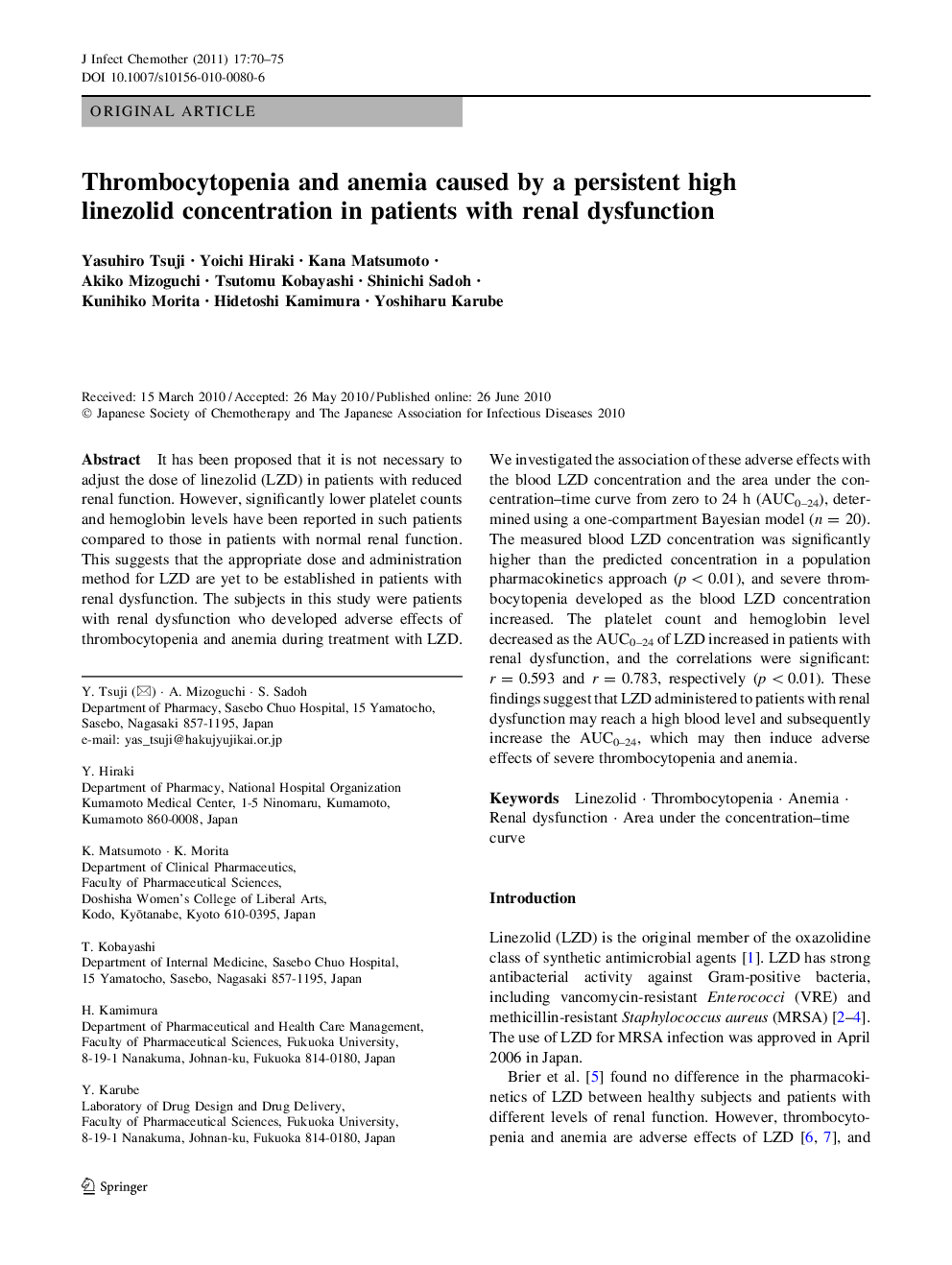| Article ID | Journal | Published Year | Pages | File Type |
|---|---|---|---|---|
| 6124280 | Journal of Infection and Chemotherapy | 2011 | 6 Pages |
Abstract
It has been proposed that it is not necessary to adjust the dose of linezolid (LZD) in patients with reduced renal function. However, significantly lower platelet counts and hemoglobin levels have been reported in such patients compared to those in patients with normal renal function. This suggests that the appropriate dose and administration method for LZD are yet to be established in patients with renal dysfunction. The subjects in this study were patients with renal dysfunction who developed adverse effects of thrombocytopenia and anemia during treatment with LZD. We investigated the association of these adverse effects with the blood LZD concentration and the area under the concentration-time curve from zero to 24 h (AUC0-24), determined using a one-compartment Bayesian model (n = 20). The measured blood LZD concentration was significantly higher than the predicted concentration in a population pharmacokinetics approach (p < 0.01), and severe thrombocytopenia developed as the blood LZD concentration increased. The platelet count and hemoglobin level decreased as the AUC0-24 of LZD increased in patients with renal dysfunction, and the correlations were significant: r = 0.593 and r = 0.783, respectively (p < 0.01). These findings suggest that LZD administered to patients with renal dysfunction may reach a high blood level and subsequently increase the AUC0-24, which may then induce adverse effects of severe thrombocytopenia and anemia.
Related Topics
Life Sciences
Immunology and Microbiology
Applied Microbiology and Biotechnology
Authors
Yasuhiro Tsuji, Akiko Mizoguchi, Shinichi Sadoh, Yoichi Hiraki, Kana Matsumoto, Kunihiko Morita, Tsutomu Kobayashi, Hidetoshi Kamimura, Yoshiharu Karube,
